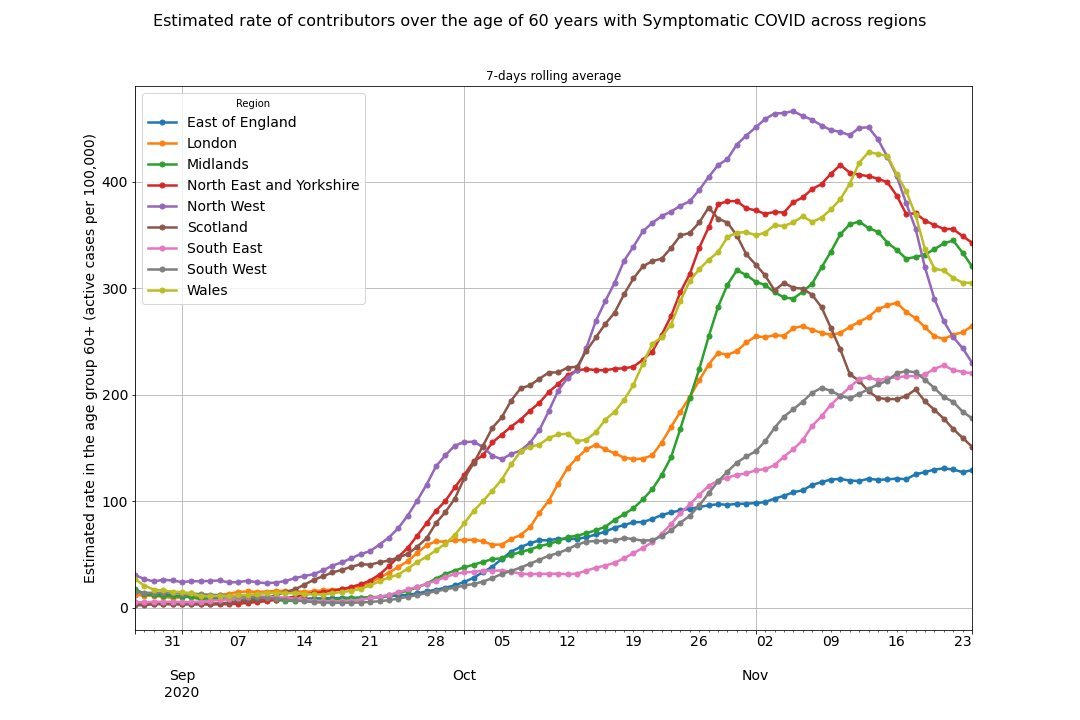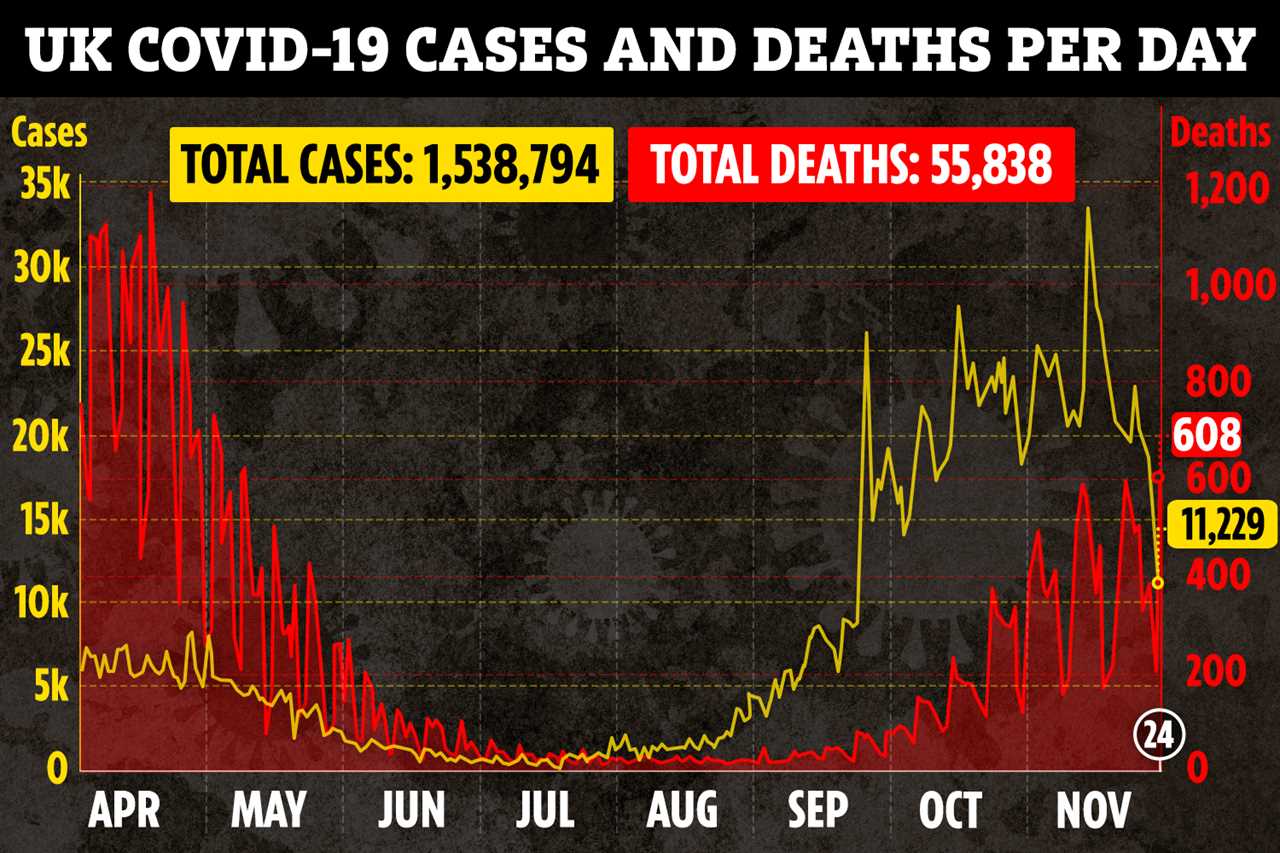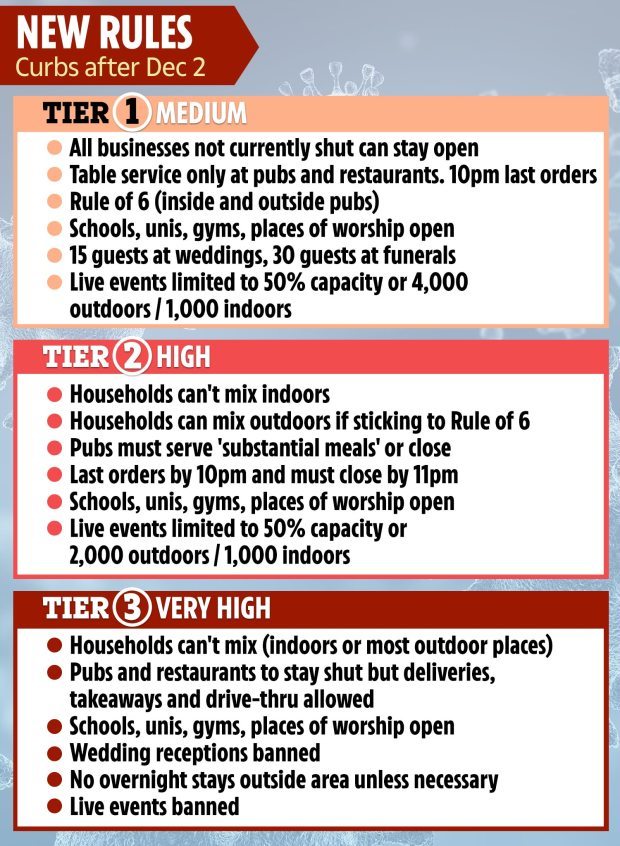EVERY region has seen coronavirus infections fall for the over 60s – except one, according to the latest app data.
New figures from the ZOE Covid Symptom Study show that the East of England has seen a gradual uptick in cases since the end of October.

Covid cases are falling for the over 60s in every region except the East of England, new app data shows
Other areas had a similar rise in cases, but most have now started to flatline or dropped, the researchers say.
The Covid case rate among the over 60s is one of five key metrics being used to determine which tier a region will go into.
Researchers behind the app estimate that there are between 309-451 new cases per million people for all age groups in the East of England.
Professor Tim Spector tweeted: “The new tier system for Covid-19 in England will be based on 5 criteria- one is the rate in the over 60’s.
“The Zoe app will start to produce these maps so we can compare regions transparently.
“Currently all downwards or flat except East England.”
RETURN TO TIERS
England’s lockdown is set to end next week with the nation returning to a tier system to control the spread of the virus.
The Government is due to announce which areas will be in Tiers 1, 2 and 3 on Thursday.
Ministers have briefly outlined the factors that will influence their decision, including case rates and surges as well as pressures on testing and the health system.
Documents released by the Cabinet Office suggest that “broader economic and practical considerations” will also play a part.
It comes amid reports Prime Minister Boris Johnson could face a “major revolt” within his party after it was reported that 80 per cent of the country could be forced into the toughest restrictions.
The latest infections data for England shows 269 out of 315 local authority areas have seen a fall in cases in the last seven days up to November 20.
Areas such as Hull in Yorkshire, Swale in Kent and East Lindsey in Lincolnshire are all expected to enter Tier 3 as they have some of the highest rates of infection in the country, Public Health England (PHE) data shows.
Tory MPs have warned that the new “toughened” tier system could reignite the North-South divide.
One said last night that the PM could face a Commons revolt over the tier system.
The source claimed almost 100 Tory MPs have raised concerns about the crippling damage to the economy from the restrictions that are due to last until April.
Tier 3 is expected to include a ban on households mixing indoors or out until a break over Christmas, pubs and restaurants only allowed to offer click and collect services and weddings still banned.
In a change from the previous tiered system, it’s expected gyms will be allowed to open in Tier 3.
Experts have warned that those living in Tier 3 won’t be able to stay away overnight.
Prof Sian Griffiths says this is because you are unable to have anyone in your home and said overnight stays depend on how many people are in your household.
Shoppers should also be able to buy gifts and goodies in the high street next month.
Most of the country is expected to return to the most stringent Tier 3 or high risk Tier 2.
Tier 2 will be “beefed up” and it is understood that pubs will only be allowed to serve booze alongside a “substantial meal” and punters will only be able to dine indoors with people they live with.
Pubs in Tier 3 will only be allowed to operate on a click and collect basis with no seating inside.
Data from the government’s coronavirus dashboard which calculates PHE data shows that Swale in Kent has 539.7 cases of the virus per 100,000 people.
Areas in the South of England had previously been in Tier 1 restrictions as cases remained low – but Swale is now the most infected place in England.
Hull has the second highest rate in England with 529.3 cases per 100,000.
The areas with the biggest week-on-week jump in rates are Medway (up from 306.9 to 415.0, with 1,156 new cases); Gravesham (up from 309.5 to 384.3, with 411 new cases); and Dover (up from 200.6 to 266.7, with 315 new cases).
The North of England had previously been home to the majority of coronavirus infections and experts had previously warned that the virus “wasn’t just an issue in the North”.
On Friday estimates from Sage suggested that the North West of England currently has a R rate between 0.8 and 1.









